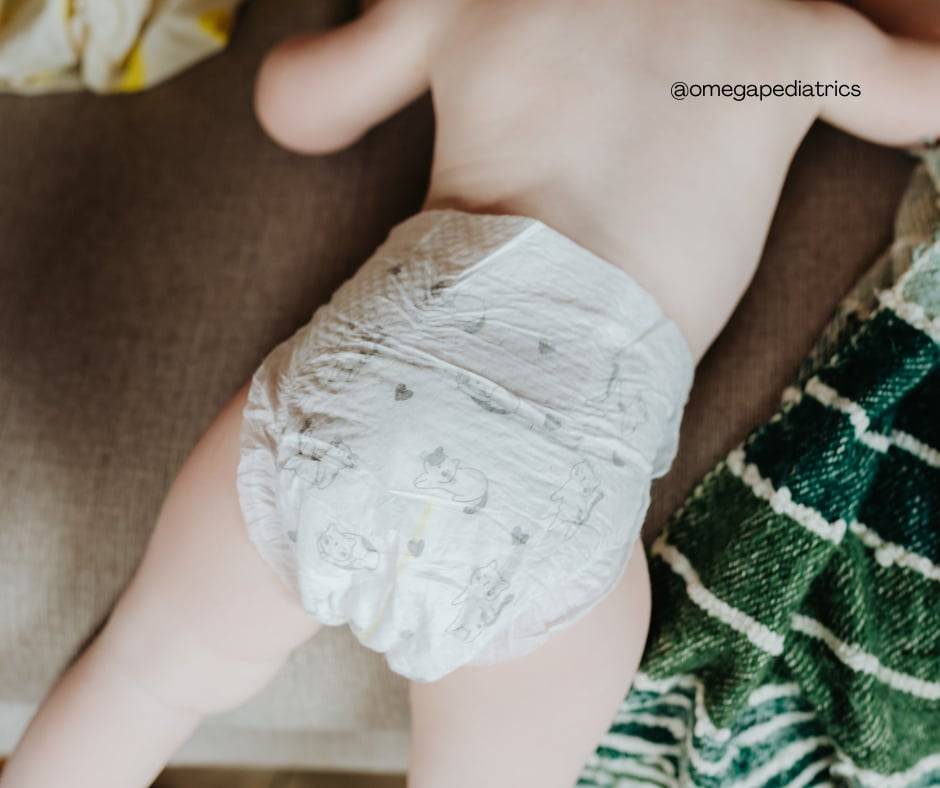Welcoming a newborn into your life is a joyous experience, but it also comes with challenges, particularly when your newborn baby is fussy. It’s not surprising for newborns to cry—this is their primary way of communicating with you.
However, when crying becomes excessive, frequent, or prolonged, it feels helpless and anxious for even the most patient parents. Understanding the reasons behind your baby’s fussiness and learning how to comfort them effectively is essential for your peace of mind and your baby’s comfort.
This comprehensive guide will delve into why newborn baby is fussy and offer expert tips to help you calm your baby. Each tip outlined in this post addresses the specific needs of your newborn, creating a soothing environment that promotes relaxation and bonding.
These tips help you navigate those tough moments with confidence to make your baby feel safe, loved, and comforted.
Why Newborn Baby is Fussy?
Before we explore the soothing techniques, understand why your newborn baby is fussy in the first place. While crying is a normal and healthy part of development, it’s their way of communicating discomfort or a need for attention. It signals to you that something isn’t quite right. Pay close attention to the cues your newborn gives.
By identifying the underlying cause of their fussiness, you can address it effectively and reduce the frequency and duration of their crying.
Hunger: The Most Common Reason for Fussiness
Hunger is one of the most frequent reasons newborn baby is fussy. With tiny stomachs, newborns require frequent feedings, sometimes as often as every two to three hours. If your baby is crying, especially if it’s been a while since their last feeding, hunger could be the culprit. Offering a feeding may quickly soothe your baby and stop the crying.
However, recognize that newborns sometimes cry not out of hunger but because they find comfort in sucking. This is why some babies may want to nurse or suck on a pacifier even when they’re not hungry. Understanding your baby’s cues helps you distinguish between crying due to hunger and crying for comfort.
Discomfort: Diapers, Temperature, and Clothing
Babies are sensitive to their environment, and things like a wet or dirty diaper, an uncomfortable outfit, or an inappropriate room temperature easily cause distress. A quick check of your baby’s diaper and clothing helps you identify and address these issues. To cite, a wet diaper makes your baby feel cold and uncomfortable, leading to crying.
Change your baby’s diaper frequently and use a diaper cream to prevent irritation. Similarly, your baby’s clothing should be appropriate for the weather—light layers for warmer weather and cozy, but not too tight, layers for colder temperatures.
Overstimulation: A Common Culprit
Newborns adjust to the outside world, surrounded by a constant, muffled sound environment. In contrast, the outside world is overwhelming with its bright lights, loud noises, and varied activities. Overstimulation is a common cause of fussiness in newborns, especially if exposed to a busy or noisy environment for an extended period.
If you notice that your baby becomes fussy after a period of activity or exposure to new environments, overstimulation may be the cause. The solution is creating a calm and quiet space to relax your baby. This might involve dimming the lights, reducing noise levels, and giving your baby time to decompress.
Gas and Colic: Painful Reasons for Crying
Gas and colic are particularly distressing for babies and parents. The gas causes significant discomfort, leading to crying and fussiness. This happens if your baby swallows air while feeding or has difficulty digesting certain foods.
Colic, on the other hand, is a condition where an otherwise healthy baby cries intensely for extended periods, often without an obvious cause. If you suspect gas or colic is causing your baby’s distress, there are strategies you can try. For gas, gently burp your baby after feedings, massage their tummy, or reposition them to release trapped gas.
If colic is the issue, soothing techniques such as swaddling, white noise, or gentle rocking are effective. However, consult your pediatrician if your baby’s crying seems excessive or if you’re concerned about their comfort.
Expert Tips to Soothe a Fussy Newborn
Now that we’ve covered some common reasons for fussiness, let’s explore expert-backed tips for soothing your newborn. These techniques calm your baby quickly and effectively, ensuring they feel safe, secure, and comfortable.
1. Swaddle Your Baby for Comfort and Security
Swaddling is one of the oldest and most effective methods for calming a fussy newborn. By wrapping your baby snugly in a soft blanket, you’re recreating the warm, secure feeling of the womb. This helps your baby feel safe and less likely to startle themselves awake.
When swaddling, ensure the blanket is snug but not too tight, especially around the hips and legs, to allow for healthy hip development. Swaddling is particularly helpful during the first few months when babies still have the Moro reflex, which causes them to startle and wake up unexpectedly.
2. Use White Noise to Mimic the Womb
The womb is noisy, filled with the sounds of your heartbeat, blood flow, and other bodily functions. White noise machines, apps, or even a fan mimic these sounds, helping your baby feel more at ease. There are many types of white noise, including sounds like a vacuum cleaner, running water, or even a washing machine.
The key is to find a sound that your baby responds well to. Also try shushing loudly near your baby’s ear, which calms them down quickly.
3. Try the “Shush and Pat” Technique
This technique involves holding your baby on their side or stomach (always supervised) and gently patting their back while making the sound. The combination of rhythmic patting and the calming sound of your voice helps your baby relax.
This technique works well for overtired or overstimulated babies since it combines the soothing power of touch with a comforting sound. It’s also a great way to help your baby transition from being awake to falling asleep, especially during those challenging late-night hours.
4. Offer a Pacifier for Comfort
Pacifiers are a great tool for soothing a fussy newborn, especially if they have a strong sucking reflex. Sucking is a natural reflex that helps babies feel calm and secure, even when they’re not hungry. A pacifier provides your baby the comfort they need to settle down.
If breastfeeding, it’s generally recommended to wait until breastfeeding is well-established before introducing a pacifier. This ensures that your baby doesn’t develop a preference for the pacifier over the breast. Once breastfeeding goes smoothly, a pacifier is a helpful addition to your soothing toolkit.
5. Rock Your Baby Gently
The rhythmic motion of gentle rocking mimics the womb, which is incredibly comforting. You can rock your baby in your arms, in a rocking chair, or using a baby swing. Some babies prefer a more vigorous rocking motion, while others respond better to gentle swaying.
Experiment with different levels of movement to see what your baby prefers. Combining rocking with other soothing techniques, such as singing or humming, enhances the calming effect.
6. Try Skin-to-Skin Contact
This is a powerful way to calm a fussy newborn. Hold your baby against your bare chest, with their skin touching yours, to provide them a sense of warmth, security, and familiarity. This practice is soothing for your baby, promotes bonding, and regulates your baby’s breathing, heart rate, and body temperature.
Skin-to-skin contact is particularly beneficial in the early days after birth, as it helps your baby adjust to life outside the womb. Whether breastfeeding or simply cuddling, skin-to-skin time is a wonderful way to comfort your baby and strengthen your bond.
7. Use a Baby Carrier to Keep Your Baby Close
Babywearing is a convenient and effective way to soothe a fussy newborn while keeping your hands free. Wearing your baby in a carrier makes them feel close to you, hear your heartbeat, and be soothed by your movements. The gentle pressure of the carrier and the rhythmic motion of walking is very calming for your baby.
Different types of baby carriers are available, from wraps to structured carriers. Choose one that’s comfortable for you and your baby, and ensure it supports your baby’s hips and spine in a healthy position. Babywearing is particularly helpful during fussy periods, as it keeps your baby close while still going about daily activities.
8. Give Your Baby a Warm Bath
A warm bath is incredibly soothing for a fussy newborn. The warm water relaxes your baby’s muscles, and the gentle splashing provides a calming sensory experience. Bathing is also a great way to establish a bedtime routine, signaling your baby that it’s time to wind down for the night.
After the bath, wrap your baby in a warm towel and continue to comfort them with skin-to-skin contact or gentle rocking. Some babies find transitioning from bath to bedtime calming, especially if it’s part of a consistent evening routine.
9. Massage Your Baby to Relieve Tension
Gentle massage helps relieve tension, improve circulation, and promote relaxation. It’s also a great way to bond with your baby and help them feel more secure. To massage your baby, use baby-safe lotion or oil and gently rub their back, tummy, arms, and legs.
Pay special attention to areas where your baby might be holding tension, such as the tummy if they’re gassy or the back if they’ve been in one position for a long time. A gentle tummy massage helps if your baby is experiencing gas or colic since it moves trapped gas and relieves discomfort.
10. Create a Calm Environment
Babies are sensitive to their surroundings. A peaceful environment can help them relax and feel more secure. To create a calming atmosphere, try dimming the lights, reducing noise levels, and minimizing sudden movements or loud sounds. If your baby is overstimulated or overtired, a quiet, dark room helps them settle down more easily.
You might also consider using blackout curtains, a white noise machine, or soft music to create a soothing environment. Consistency is key—establishing a routine for naps and bedtime helps your baby learn when it’s time to relax and sleep.
When to Seek Help for a Fussy Newborn
While it’s normal for newborns to be fussy, know when to seek help. If your baby’s crying is excessive, lasts for long periods, or is accompanied by other symptoms like fever, vomiting, or difficulty breathing, contact your pediatrician. These could be signs of an underlying issue that requires medical attention.
In some cases, a fussy baby may be experiencing a more serious condition, such as an ear infection, reflux, or an allergy. Your pediatrician diagnoses the issue and recommends appropriate treatment. It’s always better to err on the side of caution in dealing with your baby’s health, so don’t hesitate to seek help and guidance.
Be Patient and Persistent to Calm Your Fussy Newborn Baby
Soothing a fussy newborn is challenging, but with patience and persistence, you find the best techniques for your baby. Every baby is different, and what works for one might not work for another. Remember that this phase will pass as your baby grows and becomes more accustomed to their new world.
Don’t be discouraged if it takes some time to find the right soothing strategies—your efforts will pay off as you and your baby develop a stronger bond and better understanding of each other’s needs. In the meantime, take care of yourself. Caring for a newborn can be exhausting, and get rest whenever you can.
By following these expert tips, you’ll be well-equipped to soothe your fussy newborn and create a more peaceful environment for you and your baby. The early days of parenting are a time of learning and growth for you and your child—embrace the journey, and cherish the special moments along the way.
For further insights, visit Omega Pediatrics’ wealth of resources. Check out these articles on newborn care:








